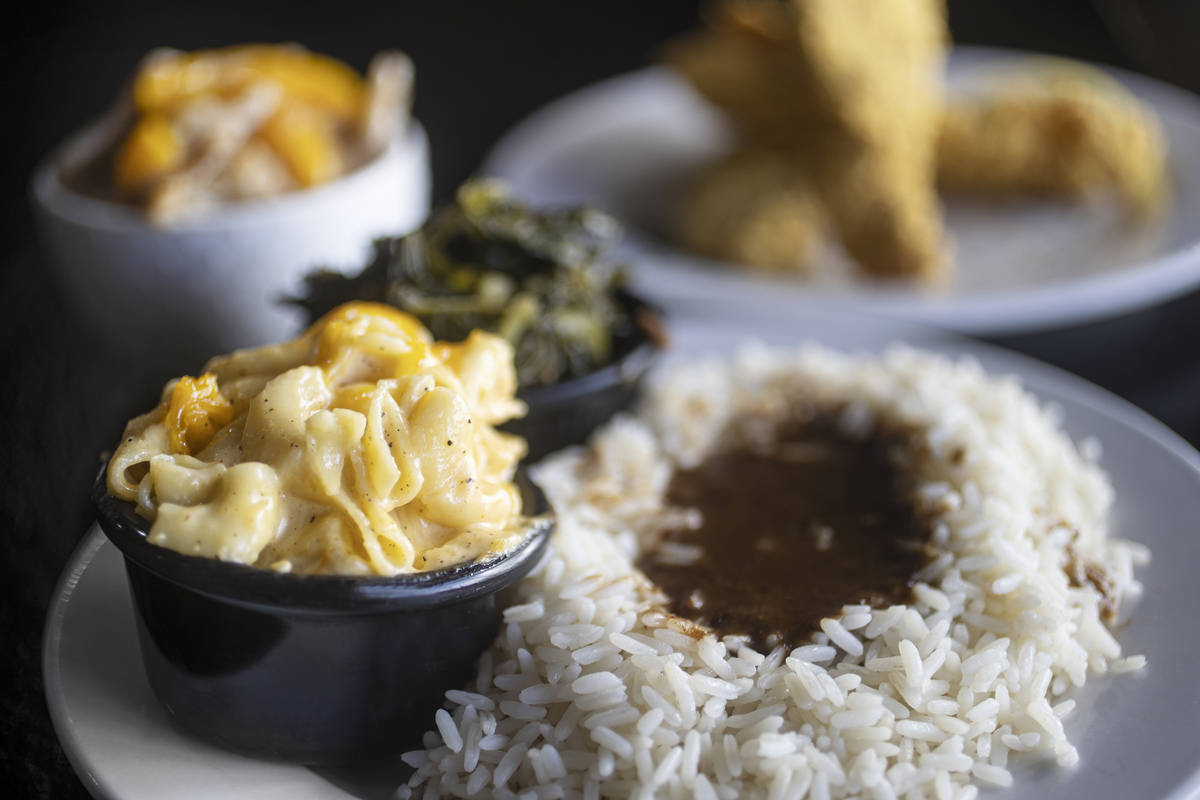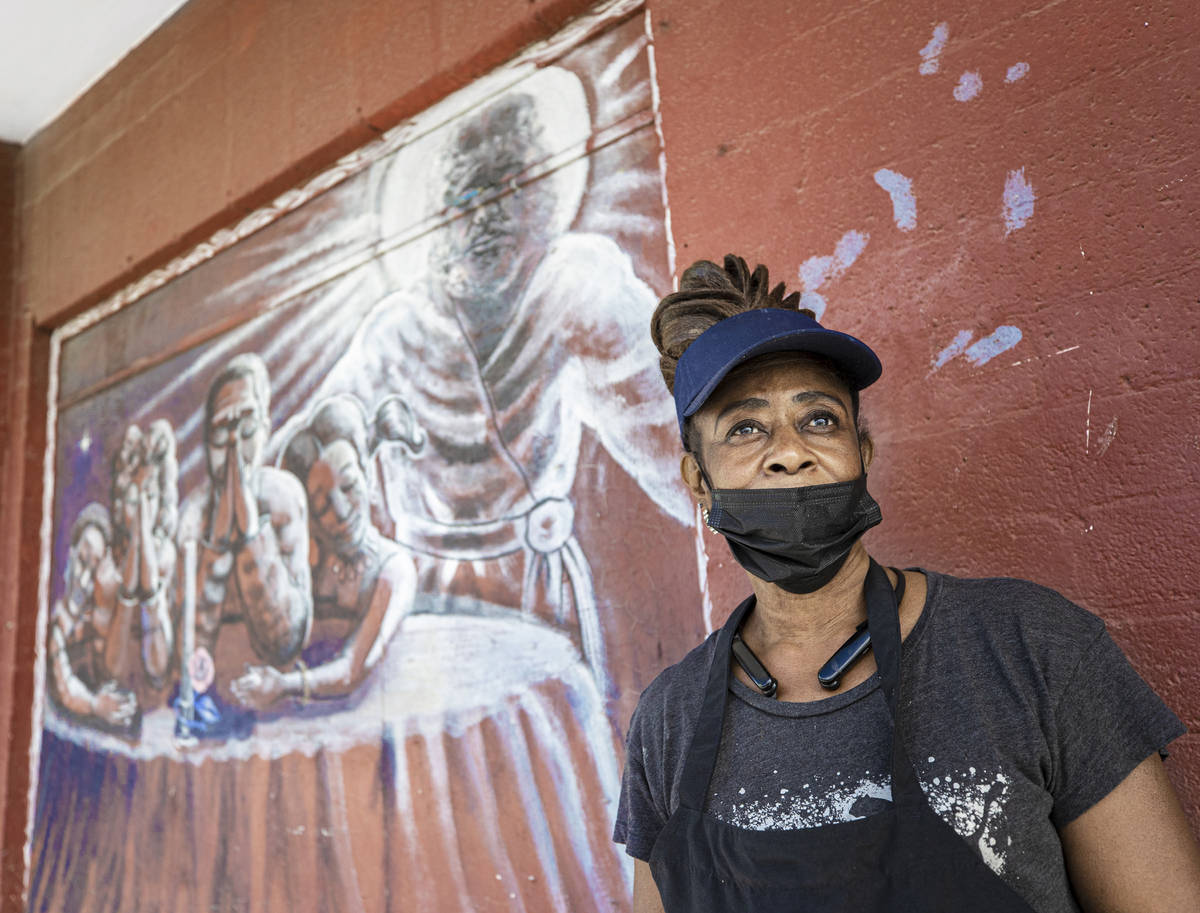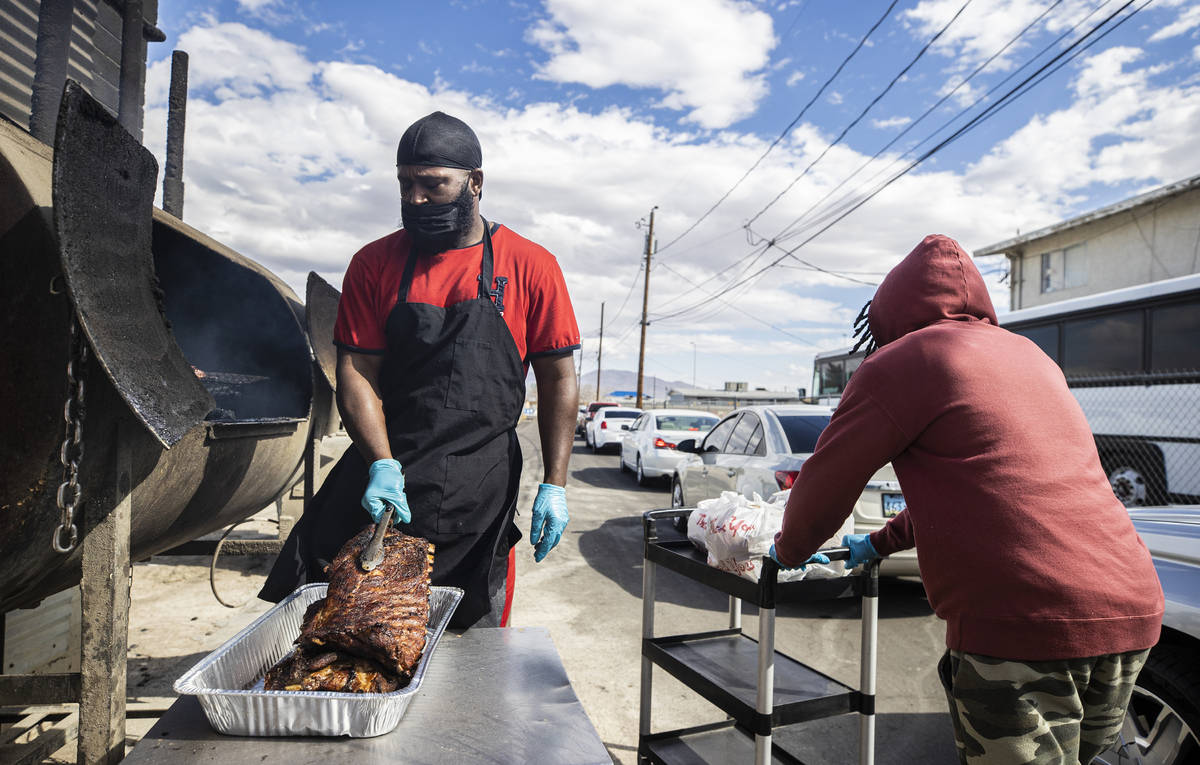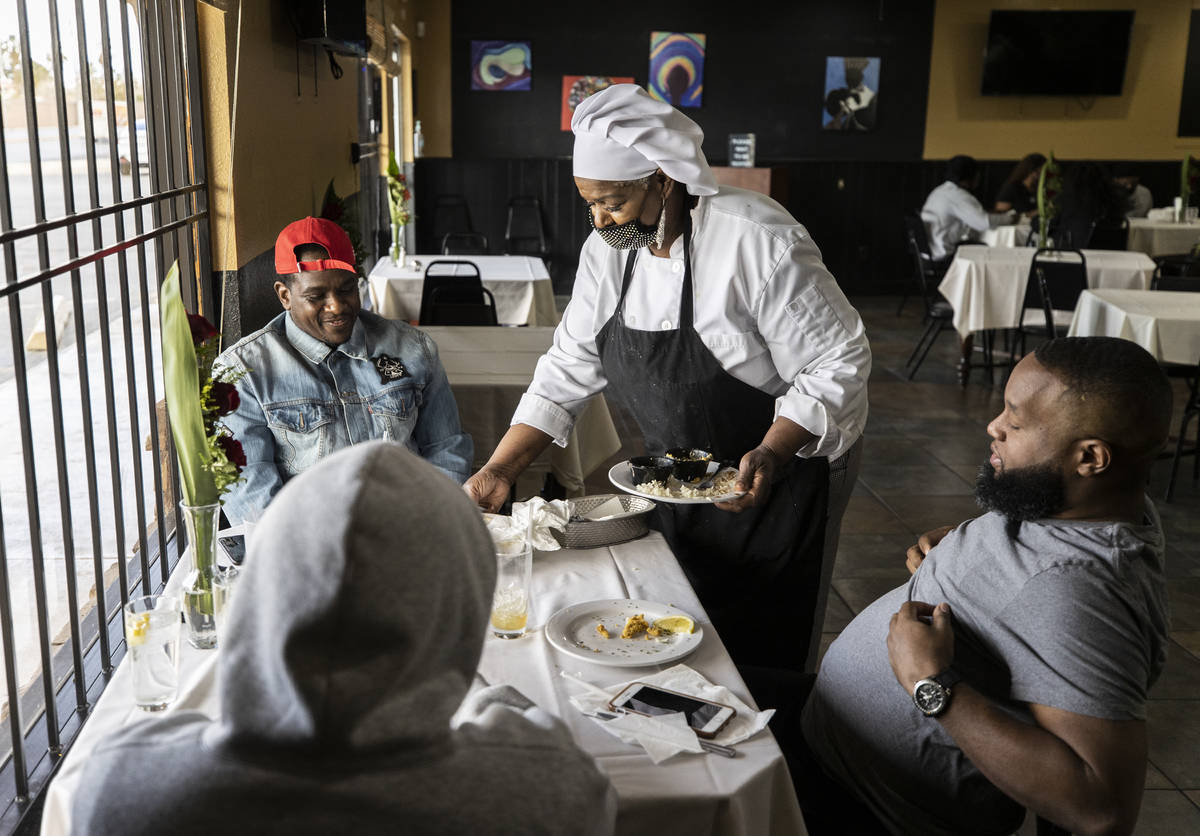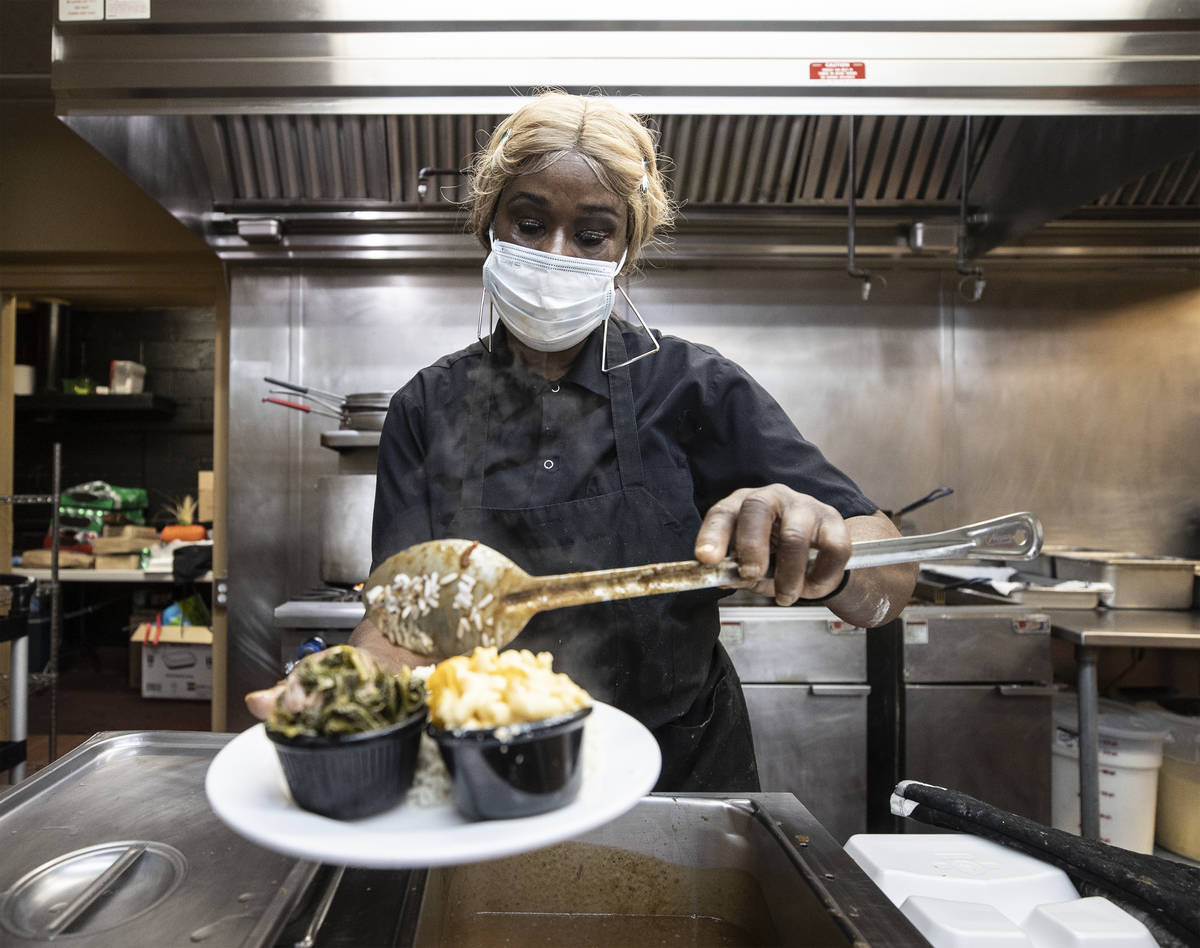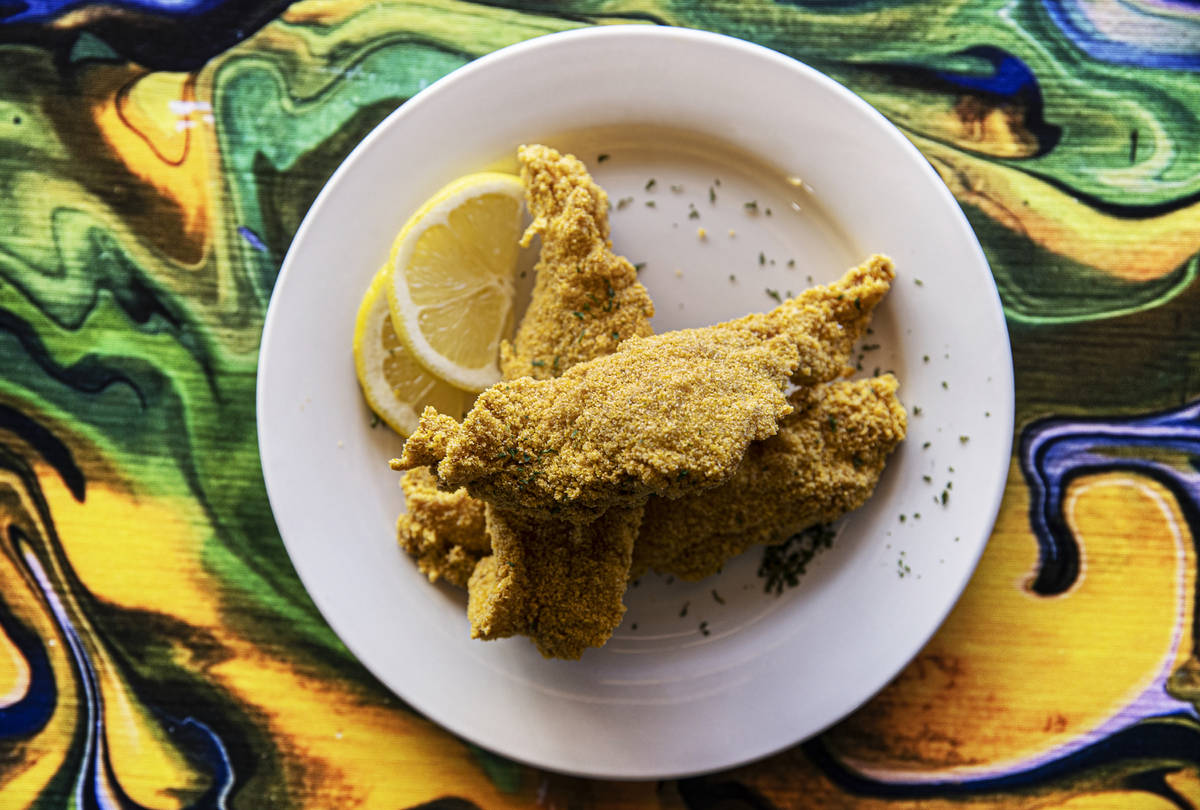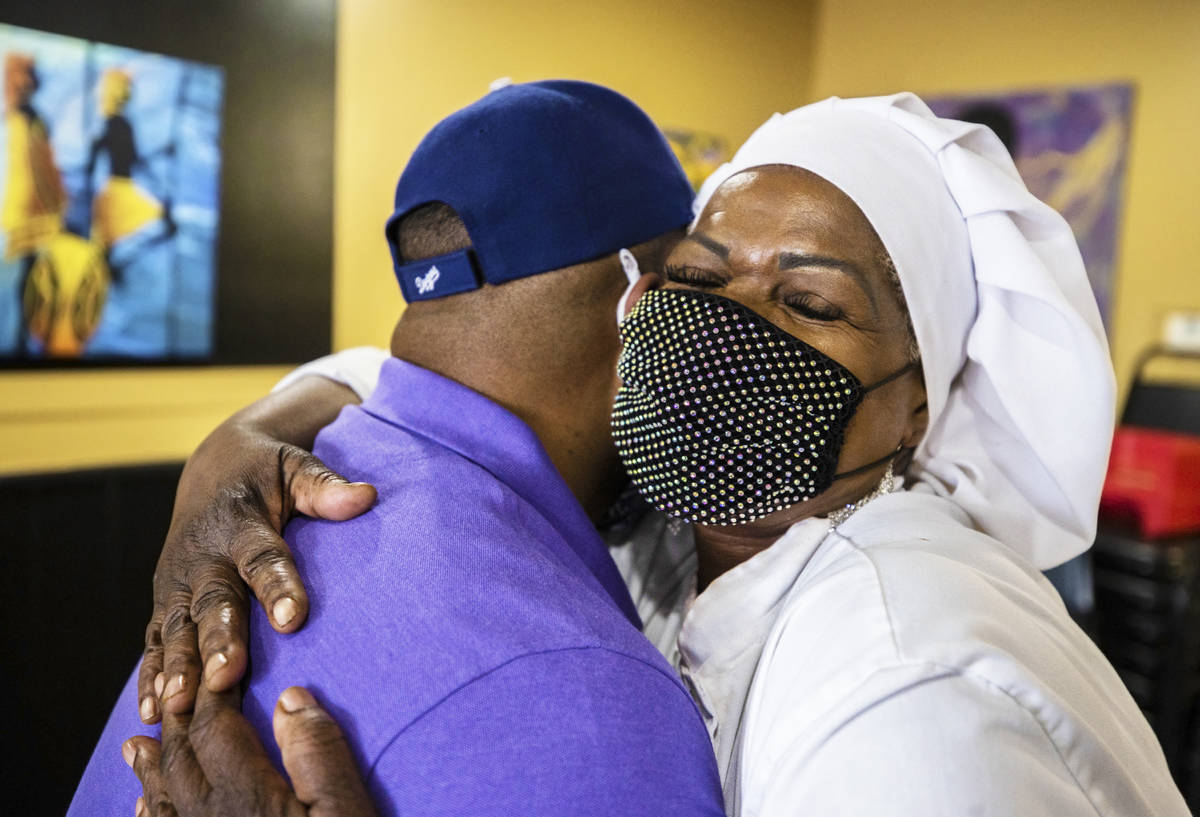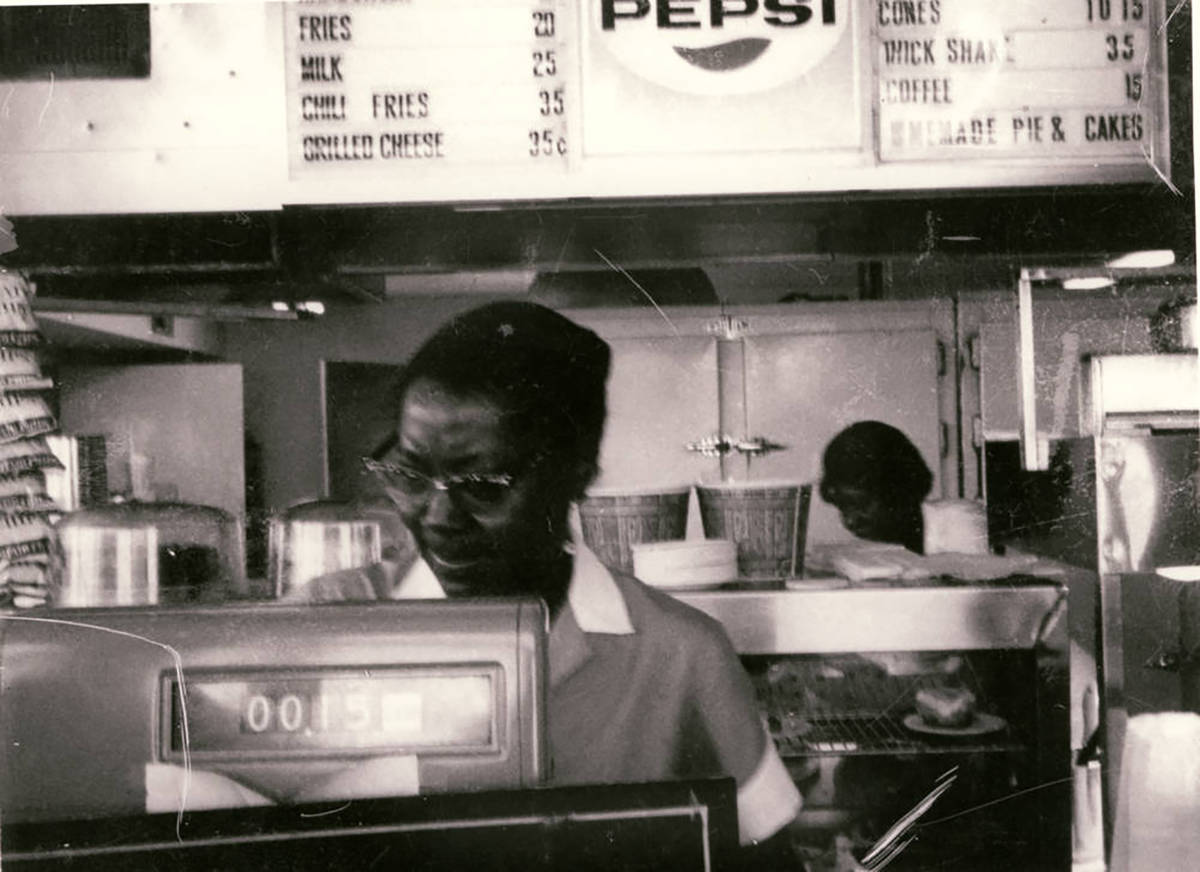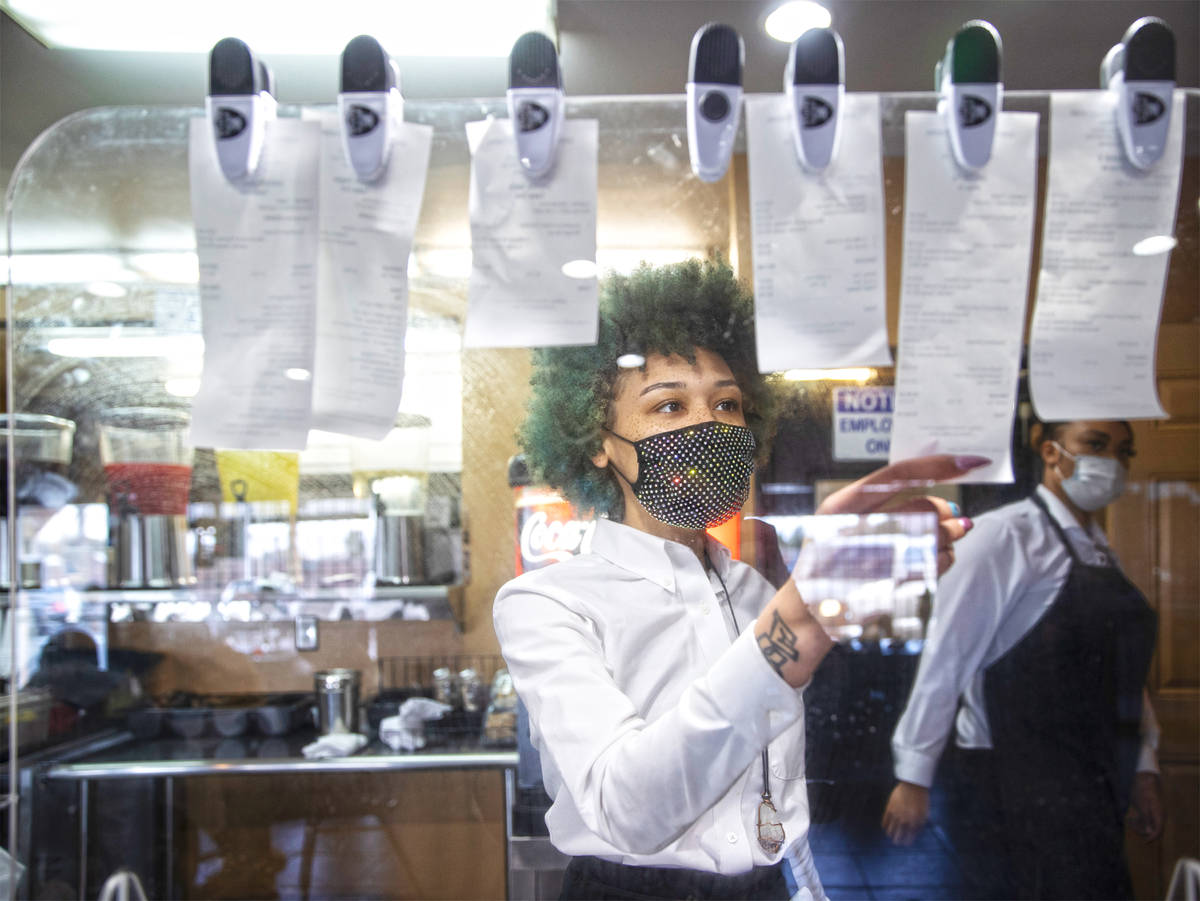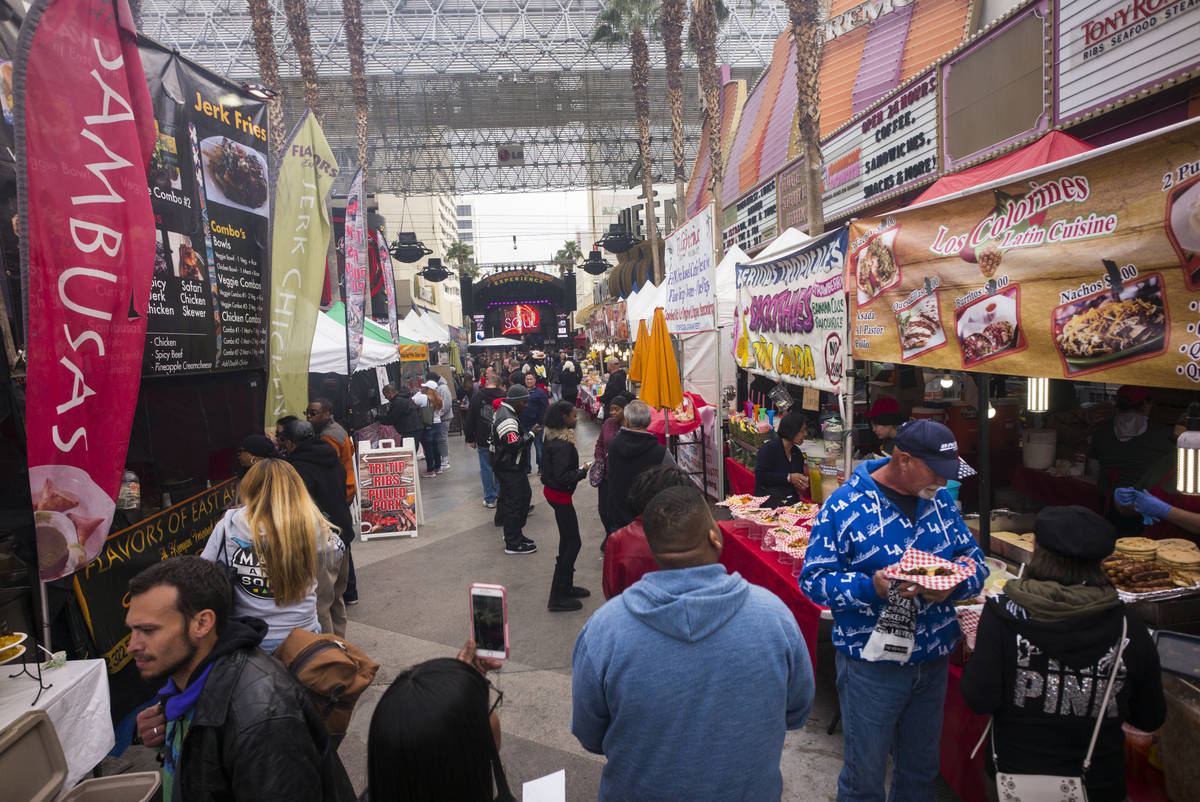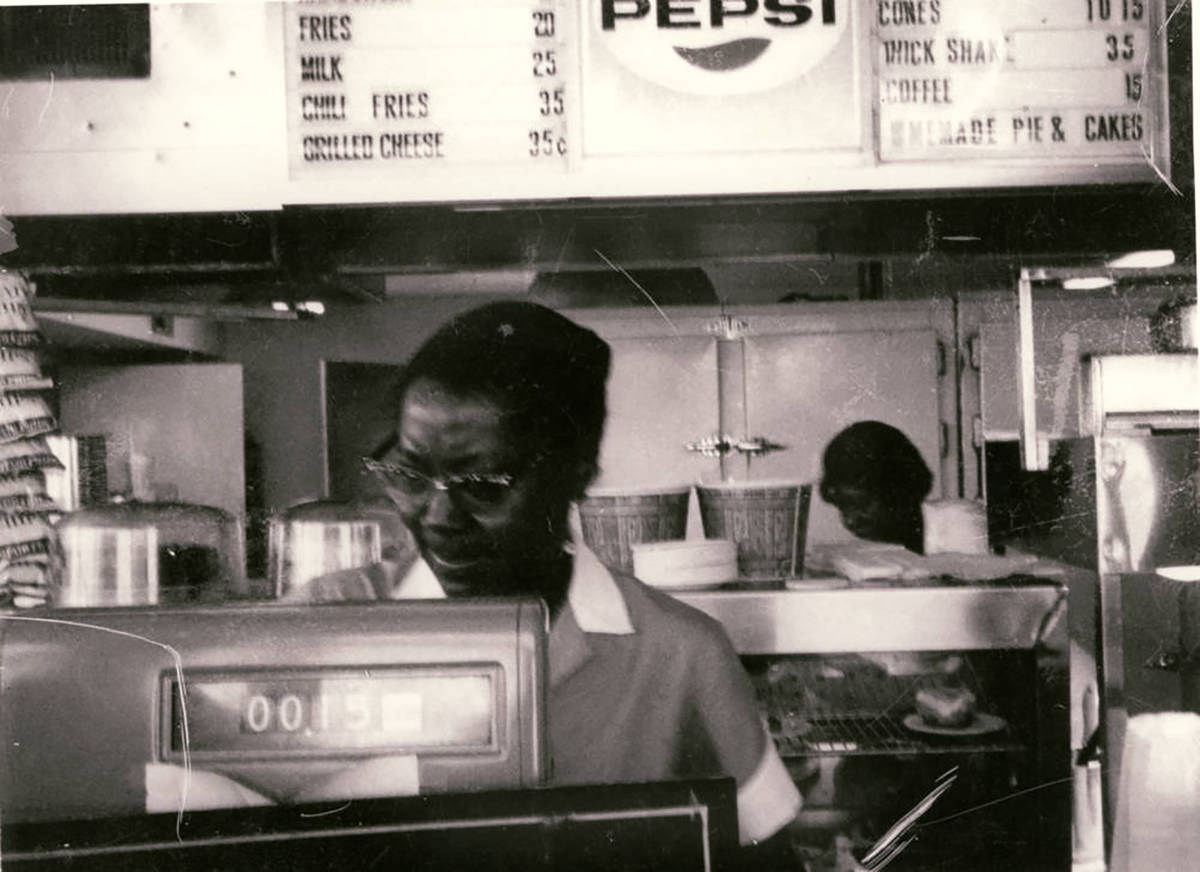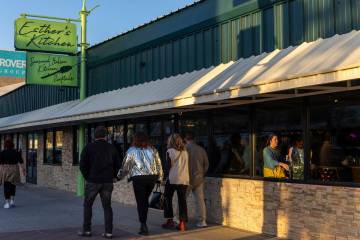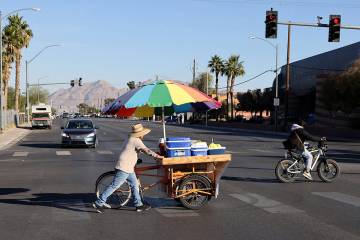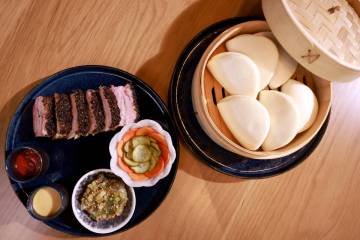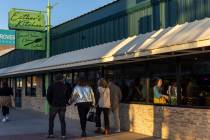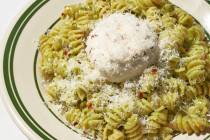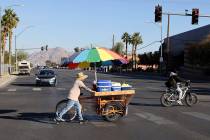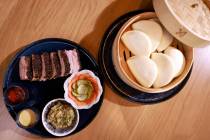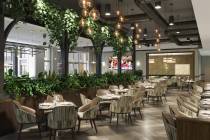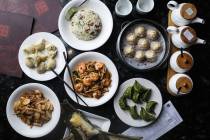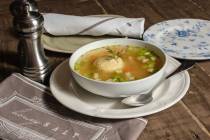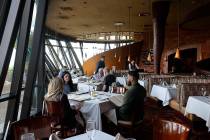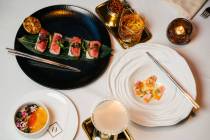Black culinary traditions rooted in Historic Westside
Anthony Bourdain once said, “Food is everything we are. It’s an extension of nationalist feeling, ethnic feeling, your personal history, your province, your region, your tribe, your grandma.”
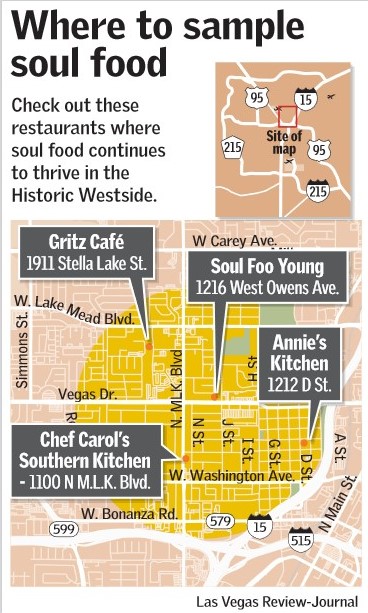
If that is true, no exploration of Black history can be complete without a study of Black culinary traditions. In Las Vegas, those traditions are firmly rooted in and best represented by the Historic Westside.
Roughly bordered by Carey Avenue, Bonanza Road, Interstate 15 and Rancho Drive, the city’s original Westside is historic for the role it has long served as a center for the valley’s African American community. As early as the 1930s, Jim Crow laws established segregation in the valley, forcing Black residents and Black-owned businesses to relocate to the neighborhood.
Long before the Moulin Rouge became Las Vegas’ first integrated casino in 1955, stars such as Little Milton and the Ink Spots performed in clubs on the “Black Strip,” aka Jackson Avenue. The Westside was where African Americans of all income levels were able to purchase homes. And in those homes, they prepared the recipes they had brought from Black communities throughout the country.
“Back in the day, nobody got licensed; it was just a community thing,” explains Margot Crooks-Bibbins, who lived in the Westside from 1959 through the mid-’70s, and whose family frequently catered for the community.
“If somebody needed you, you cooked for them. If somebody was having a party, even weddings and stuff, we used to cater.”
Kimberly Bailey-Tureaud, who has organized the Taste and Sounds of Soul Festival on Fremont Street for 20 years, also grew up there, and she has similar memories.
“What I can remember is a lot of house parties where people would bring their dishes.”
Bailey-Tureaud, daughter of famed entertainer Bob Bailey — who moved here in 1955 to work at the Moulin Rouge and helped integrate the Strip — saw plenty of famous faces enjoying her mother’s cooking in their Westside home.
“My mother used to make sweet potato pies, and Sammy Davis used to come over and get the sweet potato pies, and Redd Foxx and my dad would barbecue.”
The Moulin Rouge also was a popular dining destination during its six-month existence. Shortly after it closed, Bailey-Tureaud recalls, “The Carver House (hotel) was built right on Jackson Avenue, and there was Southern cuisine there.”
Gwen Walker, founder and curator of the Walker African-American Museum at 705 W. Van Buren Ave., also remembers the Moulin Rouge, not only as a place her mother would dress up to visit, but “because they had the little restaurant/bar site on the other side.”
Walker has been chronicling African American history for more than half a century, ever since she tried to research a Black history assignment from J.D. Smith Junior High School and found little in the library beyond “George Washington Carver and a little tidbit on slavery.”
Her collection currently contains over 30,000 flyers, photos, books, news clippings and artifacts documenting local Black history. She’s also a longtime resident of the valley’s historically Black neighborhoods, and an accomplished chef who once sold her own soul food out of the trunk of her car to skycaps and rental car employees at McCarran International Airport.
Ask her about the Historic Westside’s culinary history, and the 64-year-old will gladly share memories of the restaurants she used to frequent, intermingled with other places from the past. The precise opening and closing dates of each restaurant and their exact locations may have faded a bit in her memory, but her recollections of their food are vivid.
On D Street, near the Husky gas station, Mom’s Kitchen offered “smothered pork chops and smothered chicken in rice and gravy, candied yams and collard greens or cabbage greens.” Johnson’s Malt Shop, she recalls, was on the same block.
Survivor’s Fish, on the corner of Jackson and D streets, was near where Wesley’s Barber Shop now stands.
“Oh honey, the best fried fish ever!” Walker says.
For barbecue, she visited Uncle Ben’s and Hick’s — both on Jackson, though Uncle Ben’s later relocated to H Street. On Rancho and Bonanza, she recalled the short-lived soul food spot Big Mama’s.
“It used to be the first McDonald’s restaurant there,” Walker says. “Big Mama’s bought it and they had it for a few years, and they never did have big success.”
Across from Big Mama’s was one of her all-time favorites: Chez Polle, which had several locations over the years, including the spot where Annie’s Kitchen now sits. It was there that Walker met comedian George Kirby, and began doing his nails.
“Everybody ate breakfast there on Sunday,” she says of Chez. “When you left church on Sunday, everybody went there for afternoon lunch or brunch. Sometimes we would leave church early so we could get there at 11 and get breakfast before the rush came in for afternoon lunch.”
Another favorite of Walker and Crooks-Bibbins was Hamburger Heaven. Built in 1955, the spot served food well into this century before it closed. A few years later, in 2011, the restaurant was demolished.
“Everybody went to Hamburger Heaven, and the food was delicious: taco burgers, fish sandwiches, chicken sandwiches,” Crooks-Bibbins says. “They would butter the buns and grill them, and put the fish and the chicken in a little small boat and serve it. … They used to stay open late on the weekends, and after a night out, we would go by Hamburger Heaven.”
Now you can find good soul food restaurants scattered throughout the valley, Walker says.
“It’s great that we have soul food all over town,” she says. “Because Blacks live all over Las Vegas, so that’s a good thing.” Nonetheless, she says, the Historic Westside “is still where people try to be.”
What are her favorite places in the neighborhood now for a taste of traditional dishes?
“Gritz (Café) would be No. 1. Carol’s (Southern Kitchen) would be No. 2. And then Annie’s (Kitchen) would be No. 3.” Walker pauses for a moment before adding a fusion restaurant to her list.
“It’s not soul food per se, (but) she has a little touch at Soul Foo Young. I love their chicken fried rice. It’s off the chain.”
For those who want to explore some Black history on a plate, those four spots are just a short drive from each other (see accompanying story for details).
Contact Al Mancini at amancini @reviewjournal.com. Follow @AlManciniVegas on Twitter.
A bite of history
While soul food now is available throughout the valley, there's something special about sampling it in the neighborhood where its history runs deep. These Historic Westside restaurants were recommended repeatedly as great places to eat by those who know the community.
Annie's Kitchen: Run by husband-and-wife team Bill and Annie Thompson and their family, Annie's occupies the space that once housed the famed Chez Polle. Bill says their main reasons for opening in the historic neighborhood were "to motivate young people that they could open a business in a Black community and be successful" and to "serve them quality food at a very inexpensive price." When it opened in 2005, customers could get an entree with sides and a drink for as little as $5. The price has gone up only $3 in the years since. 1212 D St., 725-214-6062.
Chef Carol's Southern Kitchen: Arkansas native Carol Hampton-Gray has been cooking in restaurants for over 50 years and describes herself as "a dirty Southern cook." She offers everything from oysters, prawns and a delicate salmon filet in a light glaze to beef neck bones and chitterlings, all cooked "with love and patience" and served in a refined, upscale dining room. That combination draws customers from throughout the valley, as well as tourists. Hampton-Gray promises that nobody will leave hungry. "If you don't have enough to eat, just let me know," the chef says. "I'm going to bring you out some more, and I'm not going to charge you for it." 1100 N. Martin Luther King Blvd., 702-444-0696.
Gritz Café: As the name indicates, the specialty at this breakfast and lunch spot is bowls of grits, which diners can customize with their choice of meat, toppings and bread. Other house specialties include chicken and waffles, catfish and waffles, biscuits and gravy, wings, catfish, hot links, pork chops and an assortment of sandwiches and po'boys. As owner Trina Jiles writes on the restaurant's website, her goal is to "invite you to the South," and a selection of plates named after Southern states is designed to take you on that culinary journey. 1911 Stella Lake St., 702-255-4748, gritzcafe.com.
Soul Foo Young: The Far East meets the Deep South in this fusion restaurant. Take, for example, the Bruce Leroy: three whole fried chicken wings are served with veggie fried rice. For traditionalists, soul food options include barbecue rib tips, fried catfish filets and smothered or fried chicken, with choice of sides such as collard greens, mac and cheese, okra and black-eyed peas. Chinese dishes also are available, including five varieties of egg foo young. 1216 W. Owens Ave., 702-539-0333, ordersoulfooyoung.com



